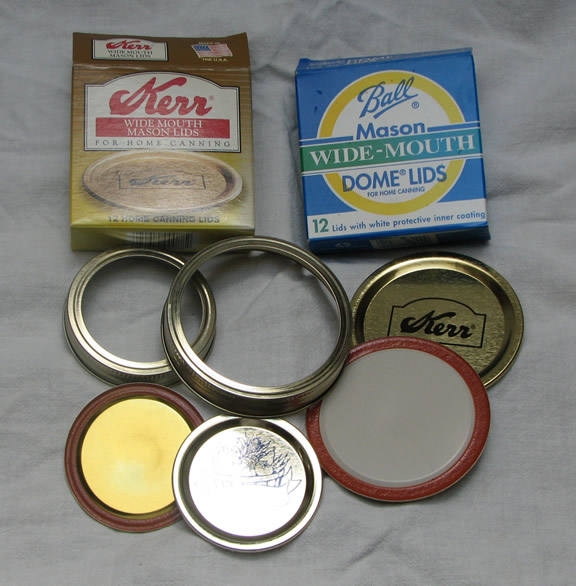You are using an out of date browser. It may not display this or other websites correctly.
You should upgrade or use an alternative browser.
You should upgrade or use an alternative browser.
Two Questions
- Thread starter jtf3456
- Start date

Help Support Homebrew Talk - Beer, Wine, Mead, & Cider Brewing Discussion Forum:
This site may earn a commission from merchant affiliate
links, including eBay, Amazon, and others.
I always try to hold the temp to 65 or below. Closer to 60 during the kraeusen phase, since the internal temperature is several degrees warmer. I use a swamp cooler.
And, no. They won't hold the pressure.
And, no. They won't hold the pressure.
I've held pale ales at 67-68F & it came out darn good. And mason jars are designed to hold a slight vacuum,not internal pressure of 2 atmospheres or more. Many have asked this question over the last year at least. And the answer is still no.
I keep mine at 64ish internal temp, some people go higher (68 is a common number thrown around). Avoid anything above 68 though...I don't know the exact temp for fuesel alcohol creation but they will really ruin your day/batch. Remember that room temp is not your fermenting temp, your fermentation will boost the liquids temp up.
And no to mason jars.
And no to mason jars.
Fusels are a problem with warm ferments, but I like to avoid the esters that can be thrown off (even at the high end of the recommended range) with some yeast. I try and keep mine down around 60-62* to keep the yeast fermenting cleanly to allow the hops to come through.
I didn't get fusels with cooper's ale yeast till it pushed 78-80F. 70f Is fine for many,but you'd start geting whatever esters they produce. With cooper's,it's a nondescript fruity flavor in the background. But 65-68F is a good range with many yeasts,including cooper's.
Would it be possible to bottle in mason jars?
Mason jars are meant to hold a vaccum, not the outward pressure of carbonation pressing on the screw ring.
Drink out of them, but don't bottle in them.
They work by creating a vacuum when you can under pressure... WHen you put your food in the jar, seal the jar and stick it inside the boiling water bath, the vacuum draws the seal downward or inward that's why the dimple on a can is supposed to be pushed inward, and if you ever come a cross a can where it is bulging outward you are in trouble...
When you bottle, the gas builds up til it maxes out the head room (held in place by the crimped cap or the cork with wire or the gasket on a grolh bottle.....The co2 hits the barrier, maxes it and then goes back into solution/
With a mason jar you would either blow the seal and all the co2 would escape or if you were lucky enough that the seal held, more than likely the glass of the jar would explode and you would have a nice bottle grenade....
The tops for a mason jar typically is a thin metal lid with a rubberized "grommet" attached to is, really just a silicon band around the edge of the lid, and a retaining ring.


When you can, the cooling of the once heated container and it's goodies creates a vaccuum, it sucks inward. It pulls the flat tightly Downward.
In fact many of the lids actually has a small indentation in the center of it, that when the vacuum occurs it is pulled inward on the top and leaves a little dimple. That's a sign that there is a vacuum pulling the lid down and keeping the veggies or jam sealed up nicely and protected from infection.
And usually after you remove the retaining ring, if everything is OK with the jar, you usually can feel/hear the the vaccum break, with a little *POP*
However any of you who have ACTUALLY canned before, probably knows that one of the ways you can tell if your food in the can spoiled is if the little dimple is pushed outword. In jars without the dimple it is really hard, usually the lid might feel loose or there might actually be wetness around the lid when you unscrew the retaining
Because usually the rotting food give of a gas which expands to push up the dimple OR it breaks the seal where the little lid gasket meets the rim of the glass.
There is considerably MORE pressure in the carbonation process of beer, often enough pressure to cause a BOTTLE BOMB, in bottles specifically made to handle the OUTWARD pressure of carbonation.
Now if you managed to find one of these older style, thick walled jars with big gaskets and flip tops...We MIGHT be having a different discussion.

But your typical jars from the grocery store...NOT.
A crown bottles cap is designed to contain the Outward and upward pressure of a beer bottle, we crimp it down, we don't create a vacuum that seats it on the bottle.
Similar threads
- Replies
- 11
- Views
- 1K
- Replies
- 25
- Views
- 2K
- Replies
- 23
- Views
- 1K
Latest posts
-
-
-
-
-
For Sale Angram Model CM Handpump
- Latest: Cool_Hand_Luke

